Jerry, a 32-year-old male, was diagnosed with gout in March 2015. So he booked an appointment with his doctor who gave him a cocktail of drugs, told him to lose some weight and stop eating red meat, legumes and full-fat dairy products. However, although Jerry adhered strictly to his treatment plan – he even loss his excess weight – he continued to suffer from gout flare-ups! So he decided to drastically change his diet and adopt a vegetarian diet. And guess what? The flare ups didn’t disappear! So what gives?
What if I told you that the general diet guidelines for gout management need some serious polishing? Keep reading to find out how to beat this debilitating condition for good.
[hr]
What exactly is gout?
Did you know that in earlier centuries, gout used to be described as the ‘disease of kings’ or the ‘rich man’s disease’? In those days, gout was rampant in the upper class or among the royalties and aristocracies since they were the ones who could afford expensive foods such as port, meat and sugar. In the 1950s, uric acid was identified as the bad guy causing gout.
One important point to note here is that uric acid is an important antioxidant – it is responsible for the neutralization of over 50% of the free radicals in the bloodstream and thus protects blood vessels from damage. However, when uric acid levels rise beyond their limit of solubility, monosodium urate can begin to precipitate out of the blood. When this happens, needle-like crystals are formed mostly in cartilage and fibrous tissues where they can reside for years without causing issues. These crystals can either re-dissolve in body fluids and enter the circulation or they may enter joint spaces or bursa (the fluid-filled sacs that act as a cushion between tendons and bones around a joint). When they get into joint spaces or bursa, these crystals are engulfed by immune cells – this activates localized inflammation leading to excruciating pain and swelling characteristic of gout.
[hr]
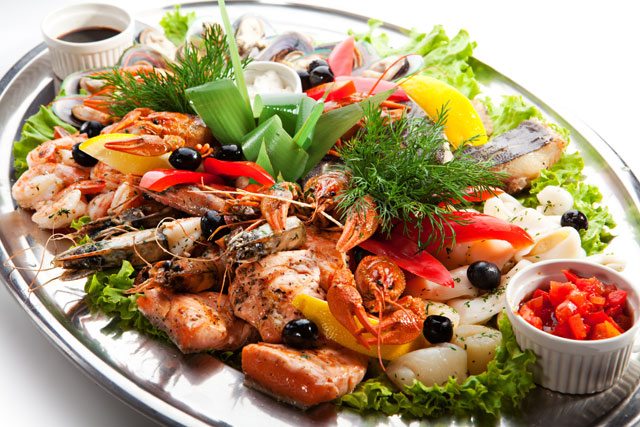
What are the risk factors for gout?
The primary risk factor for gout is hyperuricemia (high levels of uric acid in the blood). However, someone with hyperuricemia will not necessarily develop gout. The risks increase with:
- Age – gout is more common in men
- Hypertension
- Renal insufficiency
- Excess body fat
- Early menopause
- The use of drugs such as loop and thiazide diuretics, antituberculous drugs, cyclosporin, and levodopa – effects are reversible upon discontinuation.
[hr]
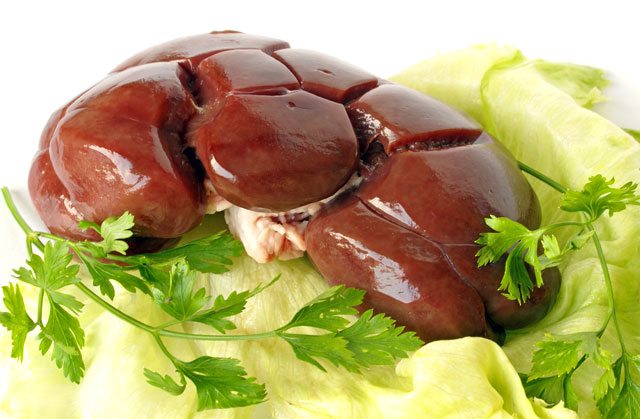
Why all the fuss about purine containing foods?
You’ve probably heard that individuals suffering from gout should avoid purine-rich foods such as:
- Organ meats like kidneys, liver, brain and sweetbreads
- Seafood like sardines, scallops, mussels, anchovies, herring and mackerel
- Red meat
- Legumes
Purines are substances present in pretty much all plant and animal cells – they provide some of the chemical structure of both DNA and RNA. When cells are broken down and recycled, the purines also get metabolized: one of the byproducts of purine metabolism is uric acid.
So here’s how the standard tale goes: if uric acid is obtained from the breakdown of purines, then the logical course of action would be to reduce one’s intake of purines. If you reduce purines which turn into uric acid, risks of hyperuricemia will go down and gout can be avoided. Problem solved! Or worsened?
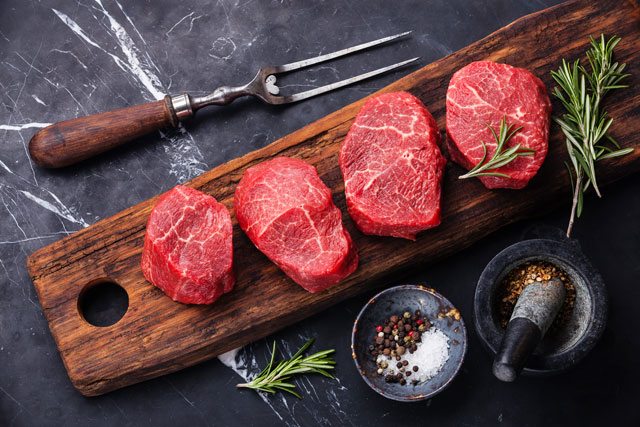
My beef (no pun intended) with this logic is that it makes gout sufferers eliminate lots of traditional foods that are nutrient-dense only to replace them with more carbohydrate and fructose-rich foods. In one study, researchers reported that ‘the conventional low purine diet approach allowing fructose intake could potentially worsen the overall net risk of gout attacks.’ Plus only about one third of the body’s uric acid comes from dietary purines; the other two third is produced by the body itself. And guess what? Research shows that eating purines actually increases uric acid excretion in order to maintain balance. So doesn’t it make sense to normalize the amount of uric acid produced by the body first?
[hr]
Then why do many health professionals see red meat consumption as a risk factor for gout?
Well, red meat is typically a component of the Standard American Diet, a diet that is also loaded with sugar, sweetened beverages, industrial seed oils, refined grains and processed meats while being low in naturally occurring antioxidants from fruits and veggies. As such, it is almost impossible for epidemiologists to isolate meat consumption from this modern pattern of eating. While it is true that most studies will try to control for these confounding factors, the truth is that, since red meat has been so constantly demonized, most individuals who consume a lot of meat often have other unhealthy habits such as smoking and drinking. They are also usually more overweight than low meat consumers who are often more ‘health conscious’ (many individuals still believe that meat is unhealthy and thus eat less meat). Plus, in Western countries, the most commonly consumed organ meats are gizzards and livers fried in industrial oils (which are often accompanied by a super-size sugary drink).
Disclaimer: There might be some people out there who would really benefit from a diet low in meat (whether it’s the purines or something else) so always talk to your doctor first – this article is not intended to act as a substitute for medical advice.
[hr]
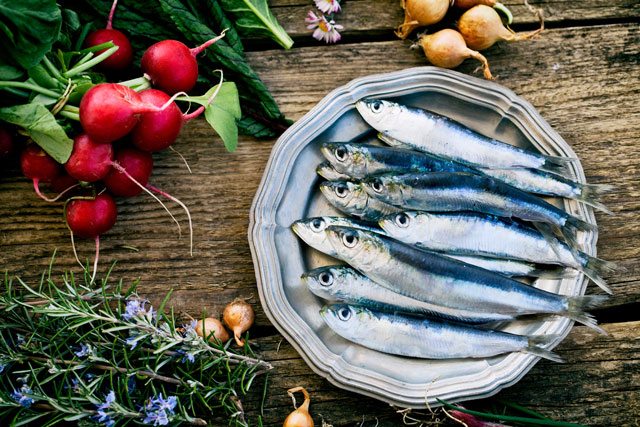
The REAL villain behind gout attacks: Inflammation
In my practice, I usually advise my patients to enjoy quality animal protein while switching to a real-food, anti-inflammatory diet and adopt healthy lifestyle practices. Of course, these are general guidelines which need to be tailored to the individual patient. For instance, many of them also have to adopt an autoimmune protocol or a specific-carbohydrate diet.
Although a high purine intake has been linked to gout attacks in those who are already suffering from hyperuricemia, research shows that purine intake alone is not enough to trigger gout flares. In fact, uric acid levels are often decreased during these attacks! Another factor associated with gout attacks is an increase in C-reactive protein (CRP) and interleukin-6, substances that indicate inflammation. These inflammatory molecules are increased in the joint fluid and serum of individuals with acute gouty arthritis.
What all this means is that systemic inflammation is a key factor influencing the occurrence of gout flares and, as I’m sure you know, diet plays a HUGE role in the development of chronic inflammation.
And here’s why I don’t advise patients with gout to avoid purine-rich foods: although these foods contain purines, they are often terrific sources of omega-3 fatty acids and are naturally low in omega-6 fatty acids. Since the omega-3 to omega-6 ratio of your diet influences inflammatory responses, making sure you consume a diet rich in omega-3s (especially EPA and DHA), will decrease systemic inflammation. This can, in turn, tone down the formation of uric acid crystals which can seriously cramp your style.
[hr]

So what are the foods that increase the risks of gout attacks?
I know that this article is about natural remedies that can help prevent gout – and I’ll get to them in a minute – but these remedies will not help much if your diet is full of gout-triggering foods. So, before you give these remedies a try, I strongly advise you consider the following points first.
1. Fructose plays a crucial role in the development of gout.
Now, I’m not saying that eating 10 to 20 grams of fructose from fruits will cause gout flares. What I mean is that consuming an excessive amount of fructose can lead to increases in uric acid levels by promoting the production of uric acid and reducing its excretion in the urine! Yeah, that’s a double whammy. And that’s not all: excessive fructose intake will also increase insulin resistance which is known to increase the risk of gout.
What you can do about this:
- AVOID sodas and energy drinks* – in one study, compared to men who consumed less than one serving of soda a month, those who had 5 to 6 drinks per week, one daily serving or two or more daily servings had a 29%, 45% and 85% higher risk of gout respectively. In another study, women who consumed more than two cans of soda per day had a 71% higher risk of gout attacks.
The reason is that these drinks are loaded with high-fructose corn syrup. Check out this article to learn more about this extensively used chemical sweetener and how to avoid it.
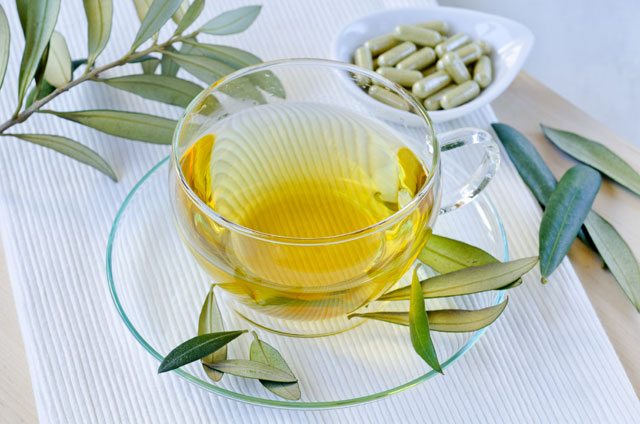
- AVOID any processed foods that contain sugar in any form (sugar is made up of a glucose molecule and a fructose molecule) or high-fructose corn syrup*. And of course, try not to add sugar to your drinks – just reduce gradually (let’s say by a quarter of a teaspoon) to allow your taste buds to adjust.
- Choose WHOLE fruits instead of fruit juices – in one study involving nearly 79,000 women, those who drank a 6oz glass of orange juice per day had a 41% higher risk of gout flare-ups compared to those who rarely consumed fruit juice. The reason is that the fructose in fruit juices is absorbed more quickly than that in whole fruits since the fruit’s membranes are broken during juicing.
This doesn’t mean it is okay to go crazy on fruits even if they’re organic. Some of my patients have had horrible gout attacks after eating 2-3 oranges in a single sitting. I usually advise gout sufferers to consume no more than 2 fruits a day and only 1 fruit at a time (with their meals) until they have ‘cleaned up’ their diet and improved their insulin sensitivity.
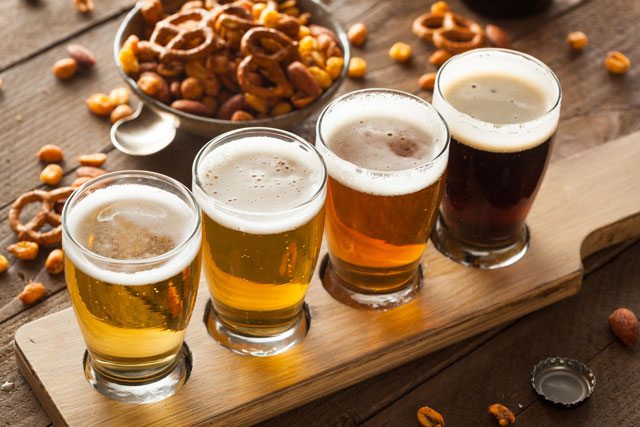
2. AVOID booze *
In the past, gout sufferers have been warned that beer and hard liquor can cause gout attacks. But recent research now shows that all types of alcohol, even wine, can trigger flare-ups by up to 50%! That’s because the body sees alcohol as a toxin and focuses on excreting it at the expense of uric acid which builds up in the body – this can cause gout flares within one or two days.
3. AVOID inflammatory foods *
These include industrial seed oils (such as oils of canola, safflower, sunflower, cottonseed and soybean), grains such as wheat, processed meats and soy products.
You also want to be careful with intermittent fasting which could reduce uric acid excretion.
* I don’t really like using the word ‘avoid’ when talking about food but then again I can’t tell you ‘hey it’s okayyyyy to eat rat poison as long as you don’t take too much of it’. I’m sure you get my point.
[hr]
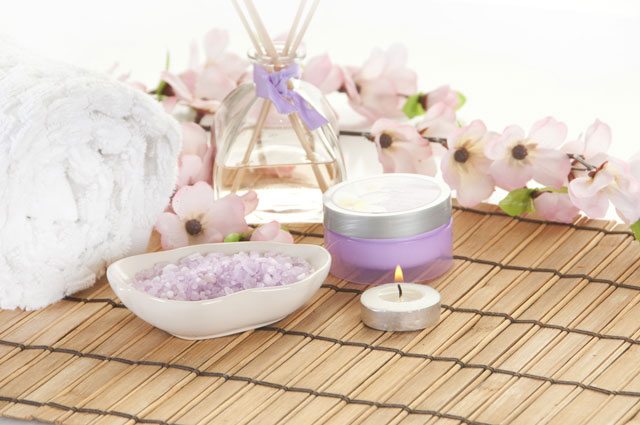
Natural remedies for gout relief
[hr]
1. Bromelain
How it can help: Extracted from the pineapple core, bromelain is a protein-digesting enzyme that also possesses potent anti-inflammatory properties. As such, bromelain is able to relieve joint and tissue swelling as well as the intense pain of a gout attack. When taken regularly, bromelain can help prevent gout attacks.
How to use: Juice the core of a pineapple and add the juice to a smoothie.
Take 500 to 2,000mg of bromelain per day in two divided doses. Start with the smaller dose and adjust based on your needs. Take about 90 minutes before your meals or 3 hours after eating unless you’re taking it to improve your digestion.
Note: Bromelain can increase the risk of bleeding in individuals taking anticoagulant drugs.
[hr]
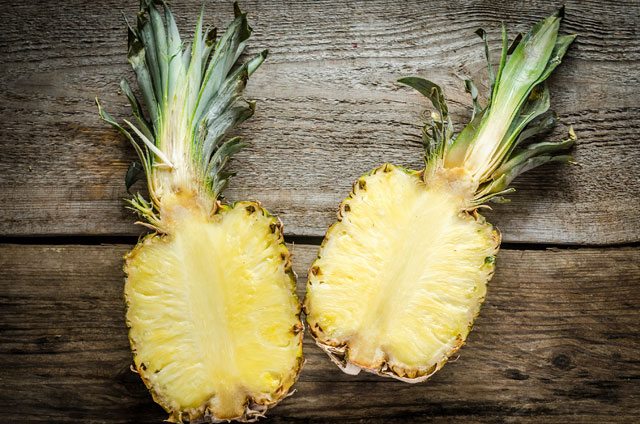
2. Celery
How it can help: Celery contains over a dozen different types of antioxidants including the well-studied flavonoid apigenin. These antioxidants can help decrease uric acid levels in the body by blocking the inflammatory effects of xanthine oxidase enzymes which are responsible for converting DNA and RNA into uric acid.
How to use: I usually recommend taking celery in its whole form – in stews, curries, soups, with dips or as a juice (with the fiber retained). If you’re feeling a bit adventurous, why not try a celery, lemon and parsley juice? Simply add 4 celery stalks, 2 peeled lemons and 1 handful of parsley to a blender containing some water; blend thoroughly. (Note: this is not a tasty juice but it is quite effective.)
You can also buy celery seed extract but make sure to buy a supplement that has the least amount of fillers in it. Start with 2 – 4 capsules per day and then gradually cut back as soon as the pain and inflammation subside. The maintenance dosage will vary between individuals so you will need to experiment a bit to determine what level works best for you.
To increase your intake of apigenin, make sure to consume the following apigenin-rich foods on a regular basis: artichoke, basil, chamomile, cloves, coriander, lemon, lime, olives, onions (unless you’re on a specific carbohydrate diet), oregano, rosemary and spinach.
[hr]
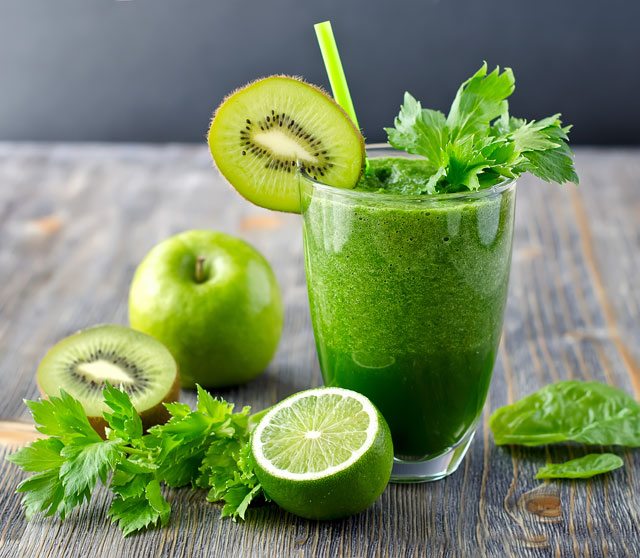
3. Magnesium
How it can help: This mineral has been found to lower the frequency of acute attacks of gout.
How to use: Foods rich in magnesium include leafy greens, nuts, avocado, kefir and banana.
If you choose to supplement, look for magnesium glycinate which is highly absorbable.
Note: Epsom salt baths are another amazing way to boost your body’s magnesium stores.
[hr]
4. Milk thistle extract
How it can help: The milk thistle plant has been used traditionally to reduce uric acid production – the silymarin it contains has an inhibitory effect on xanthine oxidase.
How to use: The best way to get the full benefits of silymarin is to take a supplement that is standardized to contain 70 to 80% of silymarin three times a day (about 420mg per day) during the acute phase and 240mg per day to prevent future gout attacks.
[hr]

5. Noni
How it can help: Research indicates that noni is able to reduce the activity of xanthine oxidase enzymes.
How to use: About 6oz of organic noni juice. Choose cold-processed, unpasteurized and unsweetened noni beverages.
[hr]
6. Olive leaf
How it can help: Olive leaves and their extracts have long been used in the Mediterranean as folk remedies for arthritis. Now, research shows that the compound oleuropein in olive leaf can prevent uric acid from accumulating in the body by inhibiting xanthine oxidase.
How to use: If you’re suffering from a flare-up, aim for 180mg of oleuropein (check the supplement label) per day divided into 3 to 5 doses. To prevent gout attacks, take 25mg of oleuropein three times per day.
[hr]
7. Parsley
How it can help: Studies indicate that the antioxidants apigenin, kaempferol and quercetin in parsley are able to lower uric acid levels during hyperuricemia with fewer side effects than the drug allopurinol. These antioxidants also inhibit the activity of xanthine oxidase enzymes. Moreover, parsley also acts as a natural diuretic and can thus help the body flush out any excess uric acid in the urine.
How to use: You can either add some parsley to your green smoothies, soups or any meat-based dishes or you can make parsley tea. To do so simply add about a quarter cup of finely chopped parsley to 7oz of hot water; steep for 10 minutes, strain and enjoy. You can either discard the parsley or add it to your meals.
[hr]
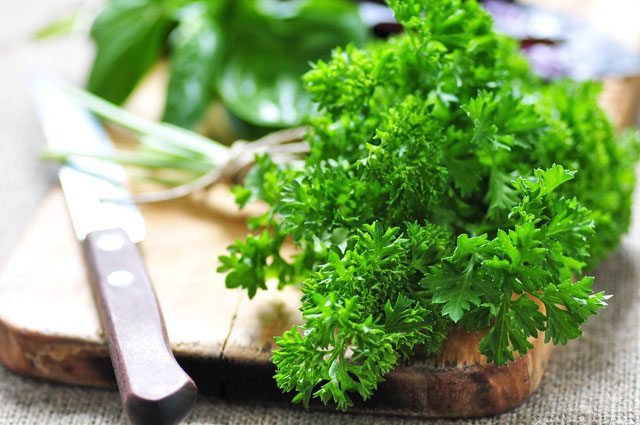
8. Stinging nettle
How it can help: Nettle leaves contain various anti-inflammatory compounds and also exert a diuretic effect on the body.
How to use: Add 1 tablespoon of dried nettle (or 1 cup of fresh leaves) to 2 cups of boiling water. Let steep for 30 minutes before sieving. The tea is quite bitter but I strongly advise against adding sweeteners. If you want, try adding some Ceylon cinnamon which also possesses anti-inflammatory properties.
[hr]
9. TART cherries
How it can help: Tart cherries are naturally rich in anthocyanins, one of nature’s most potent antioxidant that can help alleviate inflammation. In fact, tart cherries have a much higher antioxidant content than their cousins, sweet cherries. Researchers have found that subjects who consumed tart cherry juice for 3 weeks benefited from a significant reduction in levels of C-reactive protein which, as mentioned earlier, is a marker for inflammation. In another study, the risk of gout attacks dropped by 45% among subjects who consumed tart cherries for 2 days.
How to use:
Aim to drink two 10.5-ounce bottles of tart cherry juice for 3 weeks. Otherwise, eat about 6oz of cherries per day. However, don’t eat this amount in one go. Instead add these little red gems to your salads, green smoothies and desserts.
If you choose to supplement with tart cherry extract, take about 1,000mg (1g) of extract per day.
Notes:
- – Since the cherry season is short, buy them in bulk and freeze them – you can keep them in the freezer for up to a year.
- – Avoid canned cherries especially those packed in syrups and tons of chemicals.
[hr]
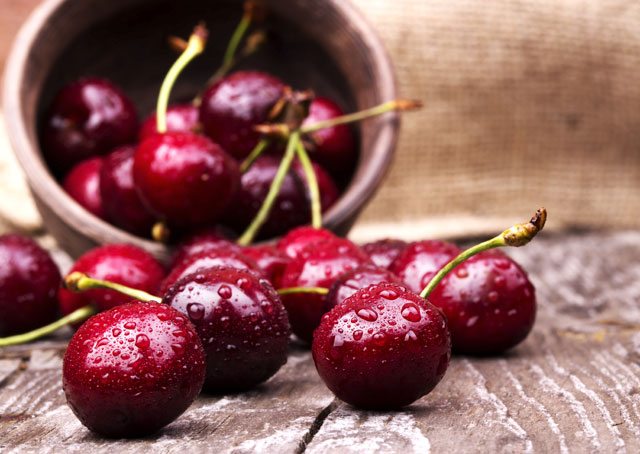
10. Vitamin C
How it can help: Natural vitamin C is known to promote the excretion of uric acid.
How to use: Aim for at least 1 – 2grams per day. I am not a fan of synthetic vitamins and strongly advise you can get your vitamin C from natural sources such as organic amla or camu camu.
Other potential natural anti-inflammatory remedies for gout include apple cider vinegar, turmeric, ginger root, dandelion, burdock, quercetin, skullcap, passion flower, chamomile, vitamin B6 and folate.
[hr]
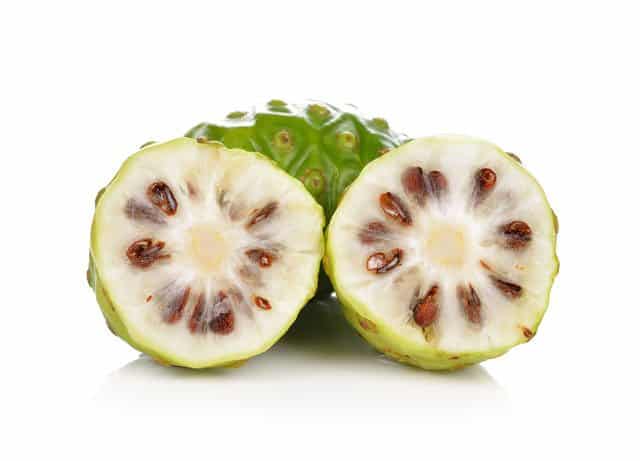
‘I am eating a clean diet with lots of veggies and meat and no fructose whatsoever. Why do I still have gout flare-ups?’
There could be numerous reasons:
- 1. The animal protein you’re eating may not be grass-fed, wild or free-range – conventional meats are often loaded with antibiotics and hormones that can mess with your gut flora and promote inflammation.
- 2. You could be suffering from nutrient deficiencies – although a clean diet is typically rich in nutrients, if you have small intestinal bacterial overgrowth or low stomach acid, your body may not be able to absorb the nutrients from your food even if you were eating the most nutritious foods out there.
- 3. You may be suffering from an underlying autoimmune condition which needs to be addressed.
- 4.The shoes you wear may promote poor circulation.
[hr]
Check out the following video for a summary of foods to avoid and those to include in order to beat gout naturally.
[youtube id=”Age_dvsJMRk”]
I am happy to say that Jerry has not suffered from any flare-ups since he started implementing these changes. Do you or anyone you know suffer from gout? What has worked for you? Share in the comments below or on Bembu’s facebook page.




